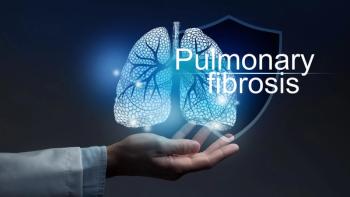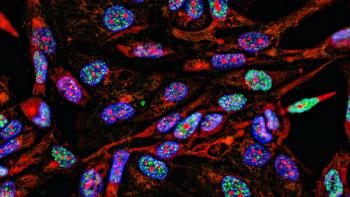
Pharmaceutical Technology Europe
- Pharmaceutical Technology Europe-03-01-2006
- Volume 18
- Issue 3
APIs: Why EU authority oversight is vital
The manufacturing process used for an API’s production is a crucial factor determining its quality.
The safety of medicines concerns us all. Everyone is confronted sooner or later with situations where a medicine can make the difference between life and death for ourselves or for those who are close to us. The possibility of a quality defect of the medicine that may lead to unexpected, detrimental effects in such situations may be something that would not normally cross our minds. Nevertheless, especially regarding older, well-established medicinal products, there are indications that such possibilities may be increasing.
"...it is estimated that annually about 70000 tons of paracetamol (acetaminophen) are consumed worldwide, representing a total of 150 billion tablets. A sub-standard product could have a more lethal impact than an atomic bomb in such cases!"1
The API: Gist of the medicine
Active pharmaceutical ingredients (APIs) give medicines their pharmacological activity. If it were not for the API a medicinal product would be as likely to cure a patient as a placebo. Several synonyms of the acronym 'API' are in use today: 'drug substance' is the traditional term in the US, and 'starting material' and, more recently, 'starting material used as an active substance' is preferred in Europe. However, the world seems to have adopted 'API' as the unofficial, but harmonized term.
APIs are manufactured worldwide using many types of production processes to a precise specification agreed with national governments. APIs may be produced by
- chemical processes
- fermentation
- enzymatic conversion
- extraction from plants or other natural sources
- a combination of these technologies.
Substandard APIs either result from poorly controlled, though approved manufacturing processes or from processes, that have not been approved by national authorities.
To help protect EU citizens from such APIs, the rules governing the manufacture of APIs destined for the EU market have just been tightened to ensure they are made to the highest possible industry standards, a quality management system in the pharmaceutical industry known as good manufacturing practice (GMP). The quality of the API is fundamental as it predetermines the essential, approved pharmacological properties of a medicinal product, especially its safety and efficacy at prescribed dosages.
Key points
To make the final medicine (powder, pill, injectable etc.), the API is mixed with other pharmacologically inactive substances (called excipients). As excipients do not normally change the intrinsic properties of the API, provided the quality of the API is as specified, the patient will be safe at the prescribed dose. However, if the quality of the API is not as specified (is substandard) then the patient's health could be affected. For example, the substandard API may contain a nonspecified toxic substance. The medicinal product containing the API would then be unsafe to prescribe, if not lethal. The question is how would a doctor know that?
What could be wrong with an API?
Examples of major API quality defects that may occur are the presence of dangerous quantities of toxic impurities, inadequate physical properties or insufficient stability. Each of these quality defects may give rise to health problems for the patient taking the medicine:
- Toxic impurities may result in short- or long-term side-effects that may range from minor to lethal.
- Inadequate physical properties, such as incorrect particle size or crystal form, may either impede the action of the medicine or result in dangerous overdosing, because the API either dissolves too slowly/quickly directly impacting the rate of absorption in the organism.
- If the API is not sufficiently stable, it may have degraded by the time the patient takes the medicine, resulting in too low a dose of the API and the possible presence of dangerous quantities of toxic degradation products.
Preventing API quality defects
To protect patients against possible API-related health risks, the EU authorities have developed and implemented a large number of laws and regulations with supporting guidelines for the pharmaceutical industry. These are extensive and very detailed. They include the requirement for thorough documentation — on site as well as to be submitted to the authorities — running from many hundreds to even thousands of pages. To comply with the laws, a producer needs to employ an appropriate level of skilled staff. In the case of API manufacture, the law aims to ensure that APIs are manufactured in a way that will consistently guarantee their high quality.
EDQMôs API inspections: the results are reason for concern
Regulatory compliance in API manufacture is fully auditable by a qualified party and should normally be audited and inspected regularly.
The manufacturing process used for an API's production is a crucial factor determining its quality. An API of the required quality and specification can only be produced based on in-depth knowledge and rigorous control of this process and its capabilities. If either a different or an uncontrolled process were used, deviations from the desired result would probably occur and the API may have — detected or undetected — quality defects. It is important to emphasize that such uncontrolled situations may pass completely unnoticed despite the analytical quality control testing of the API: the analytical testing for impurities is performed with methods that have been developed and chosen because of their suitability to detect the impurities that are expected to be present in the API. However, they can easily miss any unexpected impurities. Therefore, because uncontrolled processing and processes have a high chance of giving rise to unexpected impurities, the resulting API will be of an unknown, undefined quality even after analytical testing and can, therefore, be a danger to the patient.
Regulations, procedures and systems
The rules that are in place to protect an EU patient against these risks can be divided into two essentially different categories:
Category 1. Rules for the registration and authorization of the final medicinal product, including the API.
Category 2. Rules for the systems to be used to ensure controlled and consistent manufacture of the API.
Category 1 rules: main principles The API manufacturer has to submit a document to the health authorities (in many cases a so-called Drug Master File [DMF]) that describes in full detail all the manufacturing aspects of the API. This includes analytical testing methods, product specifications, raw materials specifications, in-process controls and API stability. The information is to be assessed by expert reviewers from the health authorities. They will only approve use of the API if the submitted information complies with all the rules. The time between filing of the document and approval can range from one to a few years.
Any changes to the manufacturing process and/or operations require the API manufacturer to provide the authorities with an amendment to the DMF while at the same time the holder of the marketing authorization for the medicinal product must submit a 'variation' document to the authorities. Many variations require assessment and prior approval from the authorities before the change is allowed to be implemented. In conclusion, difficult regulatory hurdles first have to be overcome before the implementation of a change in API manufacturing operations is permitted.
Category 2 rules: main principles The API manufacturer has to execute its operations in full compliance with a specific GMP. In October 2005, the EU adopted this principle into law for API manufacture — a principle already applied by FDA since the early 1960s.2 A harmonized standard for API–GMP now exists in the form of the so-called ICH/Q7A Guideline.3
Cost of compliance
Compliance with these regulations requires additional costs. Studies published in recent years have concluded that the 'cost of compliance' forms an important part of pharmaceutical production costs. The cost of reaching and maintaining the required Category 1 and Category 2 compliance level for the API operations may be 20–25% of a site's operating cost, less the cost of raw materials.4 In addition, depending on the types of technologies involved, over time, the high registration-related thresholds to implement improvements in API manufacture will increase the cost gap between APIs manufactured in full compliance of GMP rules compared APIs manufactured without full compliance with the rules. So strict adherence to compliance also implies significant inflexibility to change and reduces time-to-market — so it provides 'noncompliers' with significant competitive advantages.
Consequences
We need to compare the additional cost of GMP and regulatory compliance with the 'costs' of noncompliance. The latter may vary from just replacing 'rejected' material to multiple fatalities.5,6 The issue may be a matter of negligence, but may sometimes be one of wilful misconduct. Indeed, the profit motive should not be ignored. The API contributes a small percentage of the overall cost of the medicine, a level out of all proportion with its enormous quality impact. So the higher costs of using better quality, compliant APIs ought not to be a deterrent to their use. But for APIs that have become 'commodities', the cost and price differences are of great importance.
This cost difference, therefore, puts a heavy responsibility upon the competent authorities. The new law on GMP compliance requires the EU inspection, enforcement and penalty system should provide for the guaranteed protection of the EU citizen against the supply of medicines made from illegal, nonGMP-compliant APIs. Otherwise, such noncompliant APIs would continue to have the competitive advantage of being available in the EU at significantly lower prices!
Do the EU systems work?
The adoption into law of the API–GMP standard ICH/Q7A is a major milestone for making available to the EU patients safe, reliable, effective and affordable medicines. However, to judge whether this will be sufficient it is important to first assess the situation in today's EU API market.
API safety in EU medicines Until October 2005 only Category 1 rules were in force for medicines sold in the EU and no adequate API manufacturers' inspection system was in place. Consequently, until October 2005, the EU system was based almost solely on assessing paperwork, and trusting the authors of the DMFs that they reflected what actually occurs in the manufacturing plant. This meant that there was little incentive for API manufacturers, API brokers, traders and users of APIs to comply with the rules. However, many API manufacturers in the EU were already complying with the GMP standards because FDA required them before their products were approved for sale in the US. FDA not only demanded high standards, but it provided the necessary regulatory oversight and inspections to ensure their enforcement.
Unsurprisingly, for those APIs not covered by FDA oversight there is a relatively high incidence of noncompliance with such strict GMP standards. In the past few years, evidence has begun to emerge confirming that a significant percentage of, in particular, the older medicines in the EU market may contain noncompliant APIs from obscure and/or unknown origin. They present a significantly increased risk of containing potentially dangerous impurities.
Quantitative estimates are difficult to make. However, as a first example that would indicate that the situation is quite serious, published scientific research results on the fingerprinting of samples of the antibiotic API gentamicin are now available. This product is known to have caused fatalities in the US as a result of the use of substandard API material.5 The published results suggest that in the EU market the percentage of gentamicin API from unknown origin is significant.6 This conclusion has been confirmed to be a representative picture for many older APIs on the EU market, by presentations and publications on fraudulent and grossly negligent API practices, published by API traders during 2004 and 2005.7–9 In conclusion, estimations made by some sources that for older medicinal products 'at least 33% of the total API volume in the EU may be from unknown sources' do not seem exaggerated.10
What is needed now?
The EU has now created the legal basis for the worldwide inspection of API manufacturers whose products are destined for the EU market. However, the directives and guidelines make clear that API inspections will not be performed on a routine basis. Inspections will only be triggered either by suspicion of noncompliance or by a request of the API manufacturer. Without a random factor and a high enough probability of inspection the law has no teeth. EU law now places the prime responsibility and burden of proof that GMP-compliant APIs are being used, on the holders of the EU manufacturing — and of marketing authorizations for medicinal products. This responsibility will be challenged during inspections at their sites. The question is whether this new law will effectively lead to the use of only GMP-compliant and safe APIs in EU medicines. It seems likely that this can only be achieved if strong enough deterrents and potentially business-damaging sanctions as well as penal sanctions against the responsible individuals are put in place by the health authorities.
Additional considerations
Numerous publications during the past have described the very serious problems that exist regarding fake and counterfeit medicines.11–19 The World Health Organisation and other reliable sources have estimated the annual worldwide turnover for these fake and counterfeit medicines to be approximately $35 billion (â¬29.2 billion). They expect this to nearly double by 2010.
Publications also agree that the majority of these fake medicines are being manufactured in and exported by China and India, most of it to developing countries (especially in Africa), but also to the Western markets, either directly or indirectly. Taking this into account, it is of great concern that today more than 70% of the API volume contained within the medicines on the EU market originates from China and India. Without an FDA-style approach to significantly reducing the risk of nonGMP-compliant APIs entering the EU market (by implementing a programme of thorough frequent regulatory oversight, inspections and enforcement by our European competent authorities) the threat to the health of the EU citizens is certain to increase.
Medicines have always had to include some level of risk. This risk has traditionally been kept at an acceptable level. However, this has now changed: the intensity of competition — especially regarding 'commodity-type APIs' — triggered by accelerating globalization has driven the risk to unacceptable levels. The rate of change in the industry has been dramatic, the regulators have not kept with the pace, they possibly are not even fully aware of it.
Conclusion
'Wie sicher sind unsere Arzneimittel noch?' (Are our medicines still safe?), is the title of a recent press release by the German Association of Pharmacists DphG.19 Hopefully, the answer to this question will not be provided in the form of a human health tragedy in the EU. However, if the EU's system of API inspections, enforcement and penalization proves to be inadequate, the threat will remain.
Chris Oldenhof is manager of external regulatory affairs at DSM Anti-Infectives, The Netherlands and a board member of EFCG/CEFIC and vice president of APIC/CEFIC.
References
1. H. Leblanc and F. Milek, WHO Drug Information 15(1), 1–6 (2001).
2. Regulation (EC) No 726/2004, Directive 2004/24/EC, Directive 2004/27/EC and Directive 2004/28/EC of the European Parliament and of the Council.
3. ICH Q7A Good Manufacturing Practice for Active Pharmaceutical Ingredients.
4. F. Bruttin and D. Dean, 'Managing the Cost of Compliance in Pharmaceutical Operations,' IBM Business Consulting Services, April 2004. http://
5. CBS News, 8 December 2000 and USA Today, 9 May 2000.
6. F. Wienen, R. Deubner and U. Holzgrabe, Pharmeuropa 15(2), 273–279 (2003).
7. K. Metzger, 'Traders, Brokers Issues,' Presentation at the 7th APIC/CEFIC European Conference on Active Pharmaceutical Ingredients (Lisbon, Portugal, 20–22 October 2004).http://
8. K. Metzger, GMP Review, 4(2), 4–7 (2005).
9. K. Metzger, 'Counterfeit in the API Supply Chain,' Presentation at the 8th APIC/CEFIC European Conference on Active Pharmaceutical Ingredients (Berlin, Germany, 12–14 October 2005).
10. Position Papers by APIC (Active Pharmaceutical Ingredients Committee) of CEFIC's sector group EFCG, 'No safe medicines without safe ingredients' and 'Need for GMP for API production'.
11. '
12. "China's Big Headache: Fake Pharmaceuticals", Washington Post, 30 August 2002.
13. "Counterfeit Pharmaceuticals: In the line of fire",
14. 'India agrees to help Nigeria tackle the import of fake drugs", British Medical Journal 326, 1234, (2003).
15. "Killers on the loose",
16. P. Chatterjee, 'India's trade in fake drugs — bringing the counterfeiters to book' The Lancet, 357 (9270), 1776 (2001).
17. "India turning capital for counterfeit drugs", The Hindu Business Line, 3 August 2003.
18. J. Harper, "Counterfeit Medicines; Survey Report", Council of Europe, Partial Agreement in the Social and Public Health Field, Consumer Health Protection, September 2005.
19. "Wie sicher sind unsere Arzneimittel noch?" Deutsche Pharmazeutische Gesellschaft, July 2002.
Articles in this issue
almost 20 years ago
A practical approach to PAT implementationalmost 20 years ago
Viral filtration of plasma-derived human IgGalmost 20 years ago
Pharmaceutical clean rooms: specialty hygiene coatingsalmost 20 years ago
Online auctionsalmost 20 years ago
Talking Point: The patent problem with metabolitesalmost 20 years ago
Biopharmaceuticals market overviewNewsletter
Get the essential updates shaping the future of pharma manufacturing and compliance—subscribe today to Pharmaceutical Technology and never miss a breakthrough.





